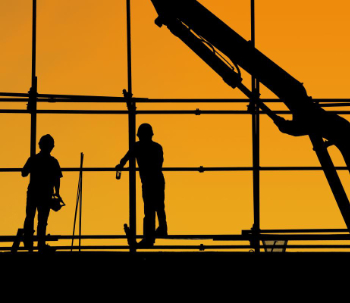2017 Soft Landings Conference
Soft Landings is a process that helps produce a building that delivers the operational goals that were set for it at inception. It is the golden thread that runs throughout the building design and delivery process.
This was one of the key messages at the BSRIA Soft Landings Conference 2017: delivering value through Soft Landings. The conference was staged on Friday 16th June 2017 at RIBA HQ, London.
Other lessons were the need for:
- Constant collaboration and communication.
- Sharing goals and early engagement.
- Transparency and flexibility.
- Keeping things simple and measurable.
- Learning from successes as well as failures.
Opening the conference, BSRIA CEO Julia Evans tasked the industry with making use of Soft Landings to deliver a broad agenda, partly a green one that considers the performance gap along with wellbeing and more social objectives such indoor air quality and making buildings better places to work.
Keynote speaker Peter Clegg MA (Cantab) MenvD, RIBA, gave a presentation entitled: The Virtuous Circle: Learning from Past Projects. He illustrated the value of good design, showing how robust design allows for an increase in occupancy rates without seeing a decrease in morale and motivation.
Jane Wakiwaka, Sustainability Manager for The Crown Estate considered the investor’s angle on buildings, suggesting that flexibility is key. Jane asked: "how do you make the West End relevant today? And how does a building owner make a product relevant to you?”. The Crown Estate has adopted Soft Landings and integrated it into their complete building project delivery process. They have front ended the process, recognising the operational cost and occupier satisfaction benefits of having handover and management teams involved earlier.
A financial perspective was explored with alternative procurement methods by Kevin Thomas, Managing Director at Integrated Project Initiatives Ltd, who explained Integrated Project Insurance, a wrapper insurance that covers the whole supply chain, whose companies work together in a virtual company – an Alliance. This type of insurance helps to avoid a blame chain as all companies are working under the same umbrella to the same objectives and there is no potential to make contractual claims against each other. This financial instrument can sit alongside Soft Landings and is from the same stable of collaborative working and shared objectives.
A case study was provided by Dr Stephen Holmes, Head of Capital Development Projects at MRC Laboratory of Molecular Biology (LMB), who shared his experiences of Soft Landings in the delivery of the new LMB building. The building took seven years to complete from starting the formal design process. He said: “filling a building with people will flush out any problems not seen when it's empty!”. A robust project structure is key along with close liaison with stakeholders who will operate and use the buildings, and the building of strong relationships.
Kevin Couling, Regional Director, AECOM, presented another case study on Blavatnik School of Government at the University of Oxford. Kevin explained that the building has automated natural ventilation with daytime solar blinds – with occupant override and summer night-time cooling. Plus low energy lighting and controls. It has a green roof and rainwater harvesting and has the largest single pane of double-glazing in Europe. Kevin said that targets were set for this project; design reviews were led by the university’s sustainable buildings philosophy (SBP); development of an energy and carbon budget; assessment of in-use energy during design; open communication; significant early involvement of a SBP lead; focused workshops; post-occupancy evaluation; and building optimisation.
Daniel Davies, Commissioning Manager, Cardiff Commissioning Ltd, started by saying: “we can all make something very complicated. From our view it is best to simplify commissioning so all parties can engage in the process. This for us has been the key link into the BSRIA Soft Landings approach”. He added that: “if you can’t explain it simply then you don’t understand it enough... a handover should not be an arm-wrestle! It shouldn't be a black art!".
BSRIA’s Technical Director, Lynne Ceeney and Soft Landings Operational Lead, Dr Michelle Agha Hossein, wrapped up the conference: Michelle explained the next phases of work – improving the Soft Landings Framework by expanding guidance on phase 2 and the probable creation of a Soft Landings digital tool being created by BSRIA in response to client requests. Training courses are also being updated.
Lynne asked the audience for their wish list for support on Soft Landings: responses included some form of accreditation for projects using Soft Landings properly. The audience also asked whether further guidance could be provided for sub-metering. There was also interest in having general case studies, especially those that show how cost savings in the latter parts of a project delivered using Soft Landings related to any increased front end costs.
BSRIA appreciated the suggestions, and support of the audience, and invited delegates to watch this space as they continue to develop resources, support and training to help get the benefits of Soft Landings into more construction projects.
--BSRIA
[edit] Related articles on Designing Buildings Wiki
- 2016 Soft Landings Conference.
- 2019 Soft Landings Conference.
- 2020 Soft Landings Conference.
- 2021 Soft Landings Conference.
- BS 8536-1:2015 Briefing for design and construction. Code of practice for facilities management (Buildings infrastructure).
- Building log book.
- Building owner's manual.
- Building users guide.
- Building performance evaluation.
- Building performance evaluation in non-domestic buildings guide – an introduction to the tests and methods in non-domestic buildings
- Building performance metrics.
- Client commissioning.
- Extended aftercare.
- Initial aftercare.
- Lessons learned report.
- Medical Research Council Laboratory of Molecular Biology soft landings project.
- Post occupancy evaluation.
- Post project review.
- Performance in use.
- Soft landings
- Soft landings - helping clients lead contractors.
- Soft Landings and Government Soft Landings - A convergence guide for construction projects.
- University of East Anglia - case study.
Featured articles and news
CIOB launches global mental health survey
To address the silent mental health crisis in construction.
New categories in sustainability, health and safety, and emerging talent.
Key takeaways from the BSRIA Briefing 2024
Not just waiting for Net Zero, but driving it.
The ISO answer to what is a digital twin
Talking about digital twins in a more consistent manner.
Top tips and risks to look out for.
New Code of Practice for fire and escape door hardware
Published by GAI and DHF.
Retrofit of Buildings, a CIOB Technical Publication
Pertinent technical issues, retrofit measures and the roles involved.
New alliance will tackle skills shortage in greater Manchester
The pioneering Electrotechnical Training and Careers Alliance.
Drone data at the edge: three steps to better AI insights
Offering greater accuracy and quicker access to insights.
From fit-out to higher-risk buildings.
Heritage conservation in Calgary
The triple bottom line.
College of West Anglia apprentice wins SkillELECTRIC gold.
Scottish government launch delivery plan
To strengthen planning and tackle the housing emergency.
How people react in ways which tend to restore their comfort.
Comfort is a crucial missing piece of the puzzle.
ECA launches Recharging Electrical Skills Charter in Wales
Best solutions for the industry and electrical skills in Wales.
New homebuilding skills hub launch and industry response
Working with CITB and NHBC to launch fast track training.

























